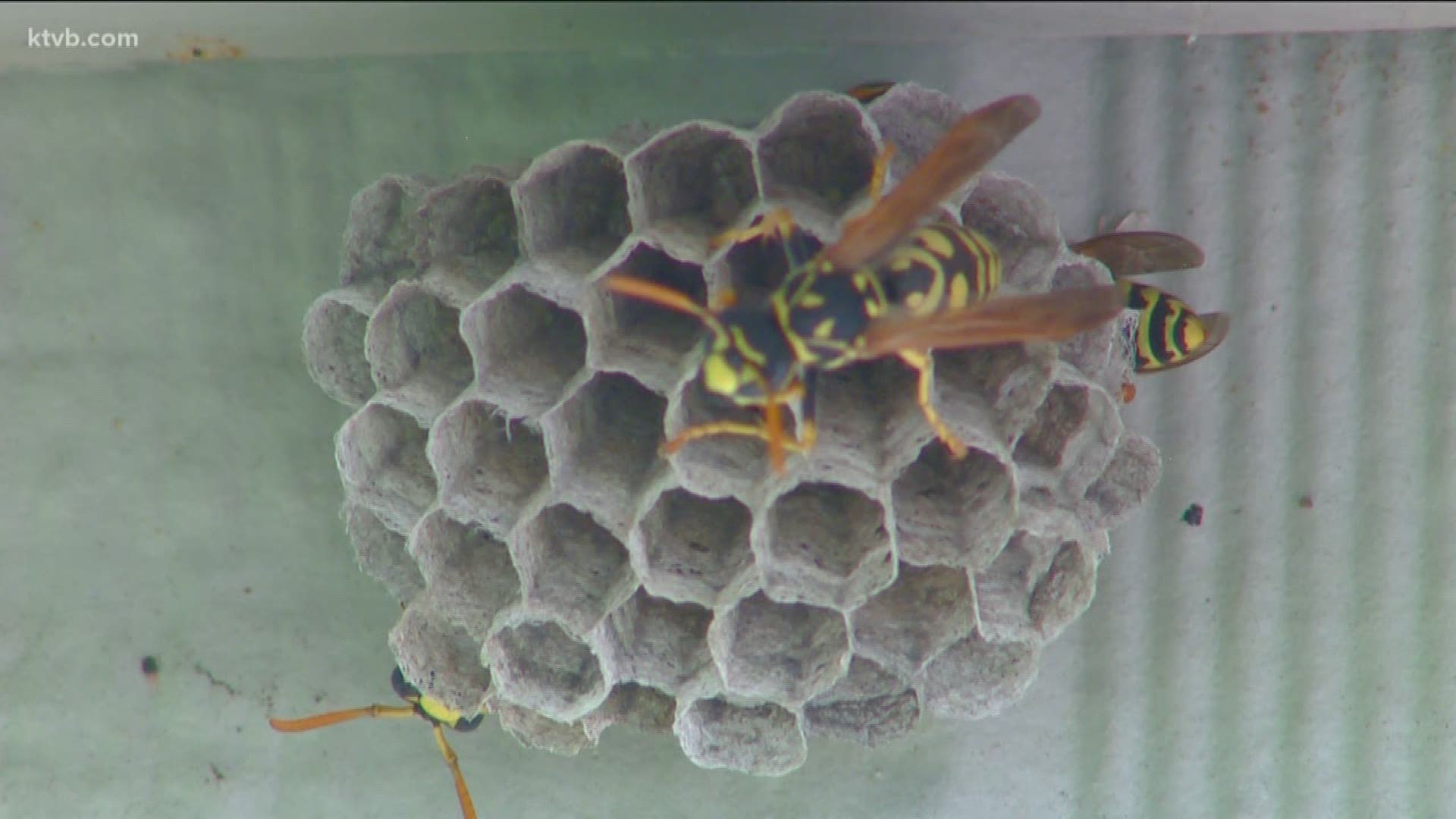BOISE, Idaho — If you’re seeing wasps and hornets lately, I’ll show you some safe ways to get rid of them.
Spring means that gardens are growing and flowers are blooming, but it also means that insects are buzzing around. And while we count on many of them, especially honeybees, to pollinate our gardens, we don’t want to put up with pesky stinging insects like wasps and hornets.
Garden master Jim Duthie shares a few tips on how we can bring those annoying insects under control, or even get them to go away for good.
Many of you have been telling me that you’ve seen an increase in wasp and hornet activity lately. Just last week, I was stung by a hornet as I reached into my mailbox to get my mail. In the spring, they’re busy building nests so they can brood and raise their young. I just noticed these small hives on my shed, so they’re trying to set up their homes in my yard. So here are a few helpful tips on how you can control them:
First, know how to tell the difference between beneficial honeybees and the more predatory wasps. We don’t want to harm the honeybees, which are very important pollinators. A honeybee’s body is rounder and is made up of three segments, covered with fuzzy hair. That allows the pollen to stick to the bee’s body while it’s foraging for nectar, which it takes back to the hive to feed its young. If you’re stung by a bee, it will likely die after stinging you.
Wasps on the other hand, which include hornets and yellow jackets, are also pollinators, but not to the same extent as honeybees. Their bodies are more angular and smooth, with two body segments and two sets of wings. They’re usually more aggressive, since they hunt and feed off of other insects, sometimes including honeybees. Wasps can continue to sting multiple times without dying.
The first thing you need to do is to locate the nest or the hive. Wasps often build papery nests under eaves and porches, and sometimes even in light fixtures and trees, and sometimes on or near the ground. When you do find a nest, use caution and keep your distance.
Commercial chemical sprays will certainly do the job to kill wasps and hornets, but they’re also harmful to other beneficial insects like the honeybees. So if you want to be more environmentally friendly, here are some methods that will deter the wasps from homesteading in your garden:
Make a fake nest and hang it where you’ve seen wasps flying around. It will deter them from building their own nearby. You can buy a fake hive, like this one called a ‘waspinator,’ or you can easily make your own. Take a brown paper lunch bag, inflate it or stuff it with paper or plastic bags to give it a round shape, and then tie it off. Hang it up and the wasps will think it is another hive and stay away.
You can also make non-lethal sprays from essential oils. Pungent scents like peppermint, clove, lemongrass or geranium oils work best. Mix about a teaspoon of the oil to about four cups of water and put it in a spray bottle. Then spray the nest to saturate it. You might have to repeat it a couple of times, but the wasps will eventually leave.
Plain old soap and water will also do the trick. Add a teaspoon of liquid dishwashing soap to a cup of water and spray that on the nest. The soapy solution sticks to the wasps’ bodies and actually suffocates them.
Wasps will also abandon a nest if it falls to the ground. So you can try knocking it down with a strong stream of water.
But stay about 20 feet away, and be ready to duck inside in case the wasps get mad and come after you. Spray at the base of the nest where it attaches to the house. The nest will soften and fall in a short time.
Finally, wasp traps are a safe and efficient way to get rid of these unwanted pests. Some are as simple as a plastic bottle, where the insects go in but they can’t get back out. You can also find more attractive glass traps that will look nice in your yard décor. The insects are attracted by pheremone drops, or you can lure them with jam, sugar water, or even cat food. Hang the trap where you’ve seen the wasps buzzing around, and they’ll eventually leave the area.
You may not be able to completely get rid of these pesky insects, but you can at least control them.
Always use caution around any wasp hives or nests. If you can, wait until night time to spray or remove hives, when it’s cooler and the wasps are settled in their nests. Wear protective clothing, like long sleeves and long pants. And if the hive is particularly large and active, you may want to call a professional exterminator.
Looking for more gardening advice? Join our You Can Grow It Facebook group to share gardening tips and questions in our community.
Watch more You Can Grow It:
See them all in our YouTube playlist here:

